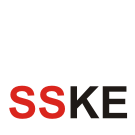From SSKE
To a service scientist, everything is a potential resource, just waiting to be used to realize value in some way. Vargo and Lusch in their Service-
Dominant Logic proposal, suggest that the most fundamental dichotomy related to resources is that of operant and operand resources. Operant resources
use operand resources to create value (realize some benefit for others and a future version of the operant resource). For example, a person (operant resource)
may use a broom (operand resource) to realize the value of a cleaner abode for those who live there.
Given the importance of resources and the strong property laws of societies at this time, Spohrer, Vargo,Maglio, and Caswell develop the notion that there are four types of resources in a formal service system governed by laws around rights and responsibilities: people (physical with rights), organizations
(conceptual, that is socially constructed and not objectively physical, with rights), shared information (conceptual as property), and technology (physical as
property). Within each of these categories operant and operand resource distinctions can be made. For example, if someone says the “software problem
caused the experimental vehicle to crash” then the software is being judged by an observer to be the operant resource acting upon the experimental vehicle
as the operant resource. In any service system, whether formal or informal, entities with behavior in accordance with the normative model are typically
rewarded (value created) and those with behavior not in alignment with the normative model are typically punished (value destroyed), but not always.
Concluding, every named thing can be a resource and there are four types of resources:
- physical-with-rights (people),
- physicalwith-no-rights (technology, environment),
- non-physical-with-rights (businesses, nations, universities),
- non-physical-with-no-rights (information).
All resources have a lifecycle: a beginning, middle, and end.
All non-physical resources exist as localized or distributed patterns in the physical states of physical resources, and are subject to coding errors (imperfect patterns or interpretations). The variety of a resource describes all possible states of that resource. When two resources interact, variety can either increase or decrease depending on the nature of the interaction.
A
B
- Beirão, Gabriela
- Borangiu, Theodor
- Borges, José Luís Moura
- Briga, Vítor
- Brito, António Carvalho
- Brito, Carlos
C
D
F
- Faculty of Engineering of the University of Porto (FEUP)
- Fernandes, Augusto
- Ferreira, João José Pinto
- Firmino, Manuel
G
I
K
L
M
- Maglio, Paul P.
- Marques, Maria
- Martins, Carla
- Martins, Maria
- Mendonça, José Baptista
- Morais, Maria Filomena Jordão
- Munteanu, Calin
O
O cont.
P
- Padrão, Rui Alexandre
- Paiva, Ana Cristina Ramada
- Pana, Laura
- Patrício, Lia
- Patrício,Dobrica, Liliana
- Peixoto, Pedro
- Pop, Florin
R
- Radulescu, Florin
- Resource
S



